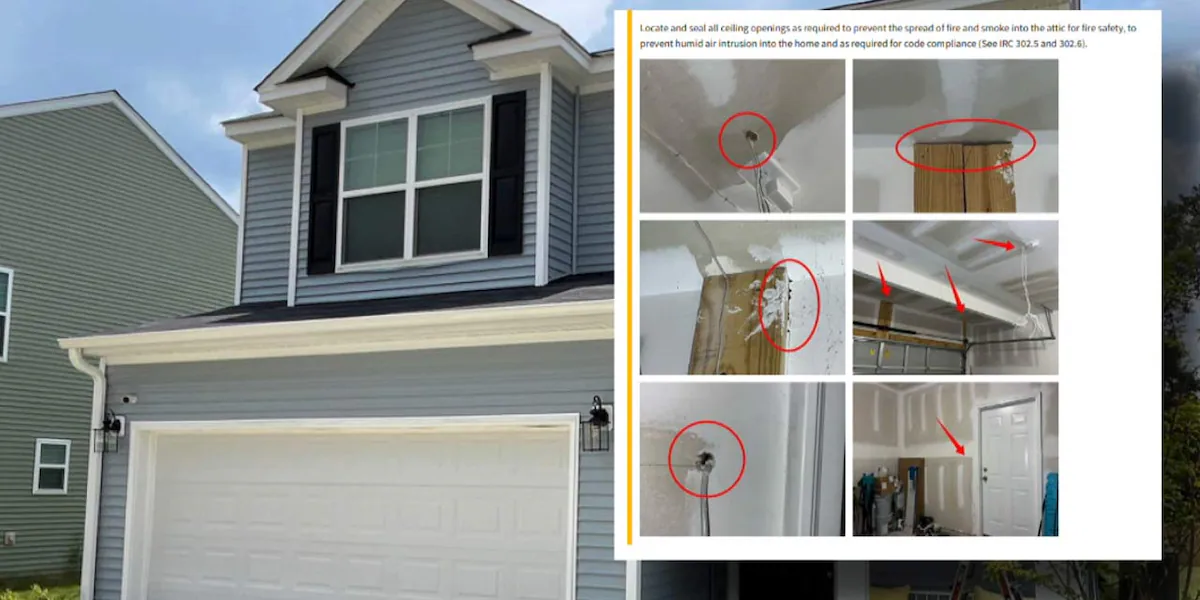
SUMMERVILLE, S.C. (WCSC) – A Dorchester County homeowner says her dream home was anything but a dream, and since moving in, she’s experienced issues leading to mold that is negatively impacting her and her family.
Joydan Wilson moved into her home in February 2025, but the honeymoon phase of the new home was short.
“We basically spent the whole summer with no air, super high humidity, and just mold coming in the cabinets, and we were opening up all the cabinets to air out,” she says.
Wilson is a single mother and a nurse. Before buying, she and her kids lived with her mother. She says the two-bedroom duplex was cramped, and she worked hard to buy her own home for her kids.
“Just to get in my own house that I worked really hard to get and continue to be really uncomfortable was absolutely insane. I don’t sleep in my bed. I sleep on the floor because the blankets feel so damp, and I have anxiety,” she says.
Wilson says visible mold led her to question the integrity of the build and what could lead to such prominent issues. Wilson turned to a third-party home inspector. Knowles Inspection Services provided a report that found more than 50 “deficiencies” in the home. Those ranged from gaps in window and sink installations to unsealed seams in the air-conditioning duct insulation. The report notes that many of these “deficiencies” are the cause of moisture issues.
“This shouldn’t be happening in a new build,” Wilson says.
The inspection notes that “The HVAC installer has visited the home multiple times to improve the HVAC system at this home to lower humidity levels at all levels and interior spaces.” But Wilson says it’s been to no avail.
The Knowles report recommends a third-party HVAC technician conduct an inspection to confirm the installation is up to industry standards. The Knowles inspection also recommends “The builder to repair the source of the elevated moisture levels at each of the three locations mentioned above, which is creating conditions conducive to mold/fungi growth.”
When provided the third-party report and asked about any remediation work done on the home, Eastwood Homes provided the following comment:
“It does not appear there are any unresolved matters involving this home. The owner has reportedly signed off, in the ordinary course, of the warranty work completed on the home….This home was documented to have met code (i.e. it was inspected throughout the build several times and a certificate of occupancy was issued). None of what the report provides is a substantive issue or violation. Items like HVAC cannot be builder issues because HVAC is specially licensed in South Carolina and they act independently of the builder. The HVAC contractor has verified their work is consistent with their requirements. The asserted mold issue was simply inaccurate.”
“It wasn’t minor to me. This is a brand-new home that I just bought. Over 50 code violations? How did this even pass inspection? How did y’all even put this on the market to be sold?” Wilson says.
A third-party mold analysis by APA Home Improvement & Inspections on Aug. 14 found the presence of mold in multiple areas and noted “unusual” levels in the garage ceiling and laundry room.
“It’s actually very scary to live in here every day, wondering if there’s mold behind the walls, and if this is going to affect my kids because I’m a nurse and I know what mold can do to the lungs and the body,” Wilson says.
As builds booms across the Lowcountry to keep up with housing demand, Live 5 dove further into the inspection process and found that inspectors with area building departments are often expected to inspect dozens of new residential homes a week and are asking whether departments are too overwhelmed to catch critical mistakes.
The Knowles report found other issues with Wilson’s house, for example:
“Rusty hinges were also observed. Rust forming on exterior metal hardware in the first year after installation indicates the materials are not rated for exterior use, or the product has defects from manufacturing. Replace with corrosion resistant materials as required.”
And –
“Multiple ceiling and interior wall openings were observed in the garage at various locations. Typically, these gaps are sealed with drywall joint compound or fire retardant spray foam.”
And –
“Water is apparently trapped along the edge of the closed door near the bottom during rain events, due to a lack of appropriate clearance (1/8”) between the door edge and the jamb, to allow the water to drain away, and the wood surfaces to air dry as designed.”
Wilson says it’s overwhelming on her mental and physical health to be in a space where she doesn’t feel particularly safe because of the constant construction issues arising.
“One day you’re like, I’m going to fight. I’m going to fight for my house. It belongs to me. I worked hard to get it. I’m going to do it. And then the next day, you’re like, oh no, it’s just too bad, here’s another problem that came up. Now you’re worried, just take it back, I don’t want it, like can they come get this house back so I can get up out of here,” Wilson says.
She hopes sharing her situation helps turn the tide of standards on these new builds and the people approving them. For now, she encourages people to get third-party inspections on new builds.



